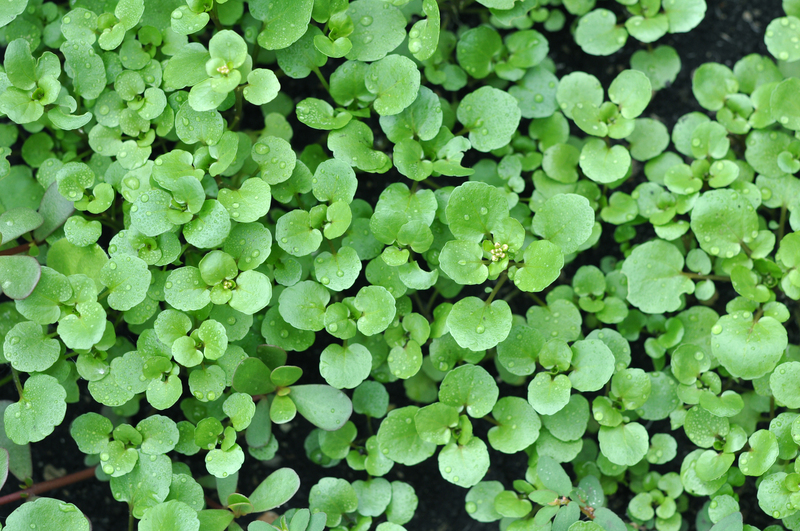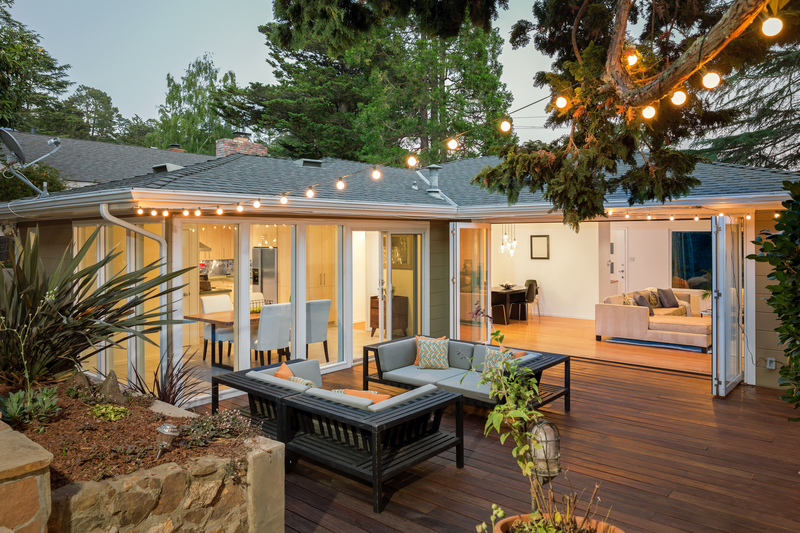Top Picks for Tropical-Looking Plants in Your Temperate UK Garden
Do you dream of transforming your temperate UK garden into a luscious, exotic retreat? The good news: a tropical look is entirely achievable, even in the sometimes unpredictable British climate! Read on for an in-depth guide to the top recommendations for tropical-looking plants that will thrive in UK gardens, offering drama, colour, and breathtaking foliage--without the need for a conservatory or heated greenhouse.
Why Choose Tropical-Looking Plants for Your UK Garden?
The UK is famous for its green countryside, but traditional gardens can sometimes feel a little... well, traditional. Adding hardy tropical-looking plants will instantly uplift your outdoor space, making it look bold, stylish, and inviting. Even in cities and small plots, these exotic-style plants create a fantastic impact and encourage biodiversity.
- Modern aesthetic appeal - Lush, dramatic foliage injects energy and colour into garden borders.
- Wildlife-friendly - Many provide shelter and food for pollinators and birds.
- Low-maintenance choices - Plenty of exotics are surprisingly easy to grow.
- Extended interest - Most tropical-style plants offer year-round structure and beauty.

Can You Grow Tropical Plants in the UK?
Absolutely! While true tropical species struggle with British winters, there's a vast range of tropical-looking plants that are cold-hardy or can be easily overwintered. These plants hail from places like East Asia, New Zealand, and South America, and have evolved to withstand sharp temperature drops. When planted with a little thought to aspect and protection, they'll fool your guests into thinking they're in a tropical paradise.
Climate Considerations for UK Gardens
Most of the UK falls into USDA hardiness zones 8-9, which is milder than you might think! Ideal conditions for exotics include:
- Sheltered spots--near fences, walls, or established plants
- Well-drained soil to prevent roots from rotting during wet winters
- Strategic mulch and winter protection (fleece, straw, or bark chip)
Top tip: Plant your tropical-style garden somewhere it will catch the sun and stay out of the wind for the best results!
Top Picks for Hardy Tropical-Looking Plants in UK Gardens
Now let's dive into our selection of the very best hardy exotic plants for a tropical effect in your own garden. Select a few from each category to build dense, layered interest.
1. Trachycarpus Fortunei (Chusan Palm)
- Hardiness: Down to -15?C
- Height: Up to 12m, but slow-growing
- Best for: Iconic tropical style; tough UK garden palm
The windmill palm is possibly the hardiest palm tree on our planet, making it an absolute must for any British tropical look. Its deeply divided, fan-shaped leaves provide instant holiday vibes. Trachycarpus Fortunei thrives in sun or semi-shade, and even tolerates coastal conditions. Plant in well-drained soil and mulch the roots each autumn. Protect young trunks with fleece in the first couple of winters.
2. Dicksonia Antarctica (Soft Tree Fern)
- Hardiness: Down to -10?C
- Height: 2-6m tall in time
- Best for: Lush, architectural canopies and shade
If you love fern-filled forests, Dicksonia Antarctica delivers true drama. This ancient fern forms a thick trunk topped with feathery astral-green fronds. It loves a shady, humid corner--ideal beneath larger shrubs or trees. Soak the trunk regularly in summer and wrap in straw/fleece in cold snaps. Pair with hostas and bold-leaved exotics for a jungle feel.
3. Musa Basjoo (Hardy Japanese Banana)
- Hardiness: Down to -8?C (with top growth protection)
- Height: Up to 4m
- Best for: Giant, exotic foliage
Musa basjoo brings instant tropical drama to UK borders, with its huge paddle-shaped leaves (up to 1.5m long!). Group several together for maximum impact, and plant in sun or dappled shade. Each winter, the stems may die back but re-sprout in spring. Mulch crowns with fleece or straw after frost. Tip: After a few years, you may even get banana fruits (though rarely edible in the UK!)
4. Fatsia Japonica (Japanese Aralia)
- Hardiness: Down to -15?C
- Height: 1-3m
- Best for: Glossy, lobed foliage & winter interest
The Fatsia japonica is an evergreen shrub cherished for its lush, hand-shaped leaves and easy temperament. It grows well in shade or part shade--perfect for difficult north-facing spots. Clusters of white flowers in autumn and decorative black berries in winter provide bonus interest. Use at the back of tropical borders for a bold impact.
5. Cordyline Australis (Cabbage Palm)
- Hardiness: To about -8?C (older plants more resilient)
- Height: Up to 5-8m
- Best for: Spiky, palm-like silhouette
As seen all over the coastal southwest UK, Cordyline Australis copes brilliantly in exposed, sunny situations, offering vertical structure and movement. Its grassy fronds provide an attractive contrast, especially against broad-leaved exotics. In harsher winters, stem dieback may occur but plants usually regrow from the base.
6. Tetrapanax Papyrifer (Rice Paper Plant)
- Hardiness: Down to -10?C
- Height: 3-5m
- Best for: Largest, boldest leaves
This stunning plant instantly makes an impression, with its enormous palmate leaves (up to 90cm across!) and fast growth. Great for a tropical 'jungle' effect, but give it room to spread. Tetrapanax prefers a sunny or partly shaded position and moist soil. In cold winters, protect the roots. Its fuzzy stems and bold habit attract attention even out of leaf.
7. Schefflera Taiwaniana & Schefflera Rhododendrifolia (Taiwan Schefflera)
- Hardiness: Down to -10?C
- Height: Up to 6m
- Best for: Elegant, layered foliage
These unusual, hardy Scheffleras are rising stars among UK exotic plant fans. Their elegant, fingered leaves and multi-stemmed habit create a real talking point. Schefflera Taiwaniana in particular is prized for its lush, glossy appearance. Grows best with a little shelter and moist soil. New, downy young stems look especially eye-catching against broad-leaved neighbours.
8. Melianthus Major (Honey Bush)
- Hardiness: Down to -8?C (with root mulch)
- Height: 1.5m-3m
- Best for: Silvery blue, dissected leaves
The Honey Bush offers dramatic, serrated foliage with a bluish tint, providing year-round interest. Its leaves release a peanut butter scent when brushed. In a heatwave, dark red flower spikes rise above, packed with nectar. Loves a sunny, sheltered spot. In colder areas, cut back after frost and mulch heavily for regrowth in spring.
9. Hedychium (Ginger Lily)
- Hardiness: Usually to -5°C (protect in cold regions)
- Height: 1.5m-2m
- Best for: Scented late-summer blooms and lush leaves
Ginger lilies offer more than just exotic foliage--late summer brings clusters of fragrant orange, yellow, or white flowers. Attractive lance-shaped leaves provide a tropical feel; best in moist, rich soil. Mulch crowns in winter and cut down spent stems to ground level after frost.
10. Bananas Alternatives: Ensete Ventricosum 'Maurelii' (Red Abyssinian Banana)
- Hardiness: Not frost hardy, but grown as summer centrepiece/dug up for winter
- Height: Up to 2.5m in a season!
- Best for: Largest, red-edged leaves
If you want giant, intensely coloured foliage, Ensete 'Maurelii' is unrivalled. While not fully hardy, it can be dried off and stored in a frost-free shed over winter. Use as a centerpiece in containers and team with other exotics for maximum impact.
11. Canna Lilies
- Hardiness: Down to -5? C (mulch in cold areas)
- Height: 80cm-2m
- Best for: Brilliant exotic flowers and bold foliage
Canna lilies bring bold, strappy leaves in greens, bronze, or even stripes, plus vivid flower spikes from midsummer to autumn. Grow in a sunny border with decent soil. In frost-prone gardens, lift rhizomes after frost or insulate heavily.
12. Exotic-Looking Evergreens: Phormium (New Zealand Flax)
- Hardiness: To -10?C
- Height: 1m-3m, depending on cultivar
- Best for: Year-round colour with dramatic sword leaves
Phormiums are superb shrubs for adding texture and colour all year. Their bold, upright leaves come in green, purple, bronze, pink, and yellow shades, making them brilliant for exotic mixed borders. Drought tolerant once established and easy in most UK soils.
How to Create a Tropical-Looking Garden Design in the UK
Layering and Planting Tips
- Create dense plantings using a mix of tall palms, mid-tier ferns and groundcover exotics.
- Mix broad-leaved species with spiky, sculptural forms (e.g., bananas with phormiums).
- Add seasonal fillers like canna, gingers, and dahlias for ongoing interest.
- Incorporate shade-lovers such as fatsia, arum lilies, or hostas for jungle depth.
Boosting Winter Hardiness
- Mulch tender crowns in autumn with straw, bark, or dry leaves to insulate roots.
- Wrap trunks of bananas, palms, and tree ferns in fleece in cold areas.
- Move containers under shelter (or indoors) where possible if hard frost is forecast.
- Group exotics together for a protected 'microclimate'--plants insulate each other!
Accessorizing Your Tropical Garden
Finish your tropical masterpiece with the right accents:
- Tropical-inspired pots or glazed planters
- Bamboo fencing, rattan seats, or bold cushions for a holiday vibe
- Water features or pebbles for a rainforest feel
- String lights for nighttime ambience
Frequently Asked Questions About Tropical-Looking Plants in the UK
What is the easiest tropical-looking plant for UK gardens?
Fatsia japonica earns top marks for low-maintenance, all-year drama, and proven hardiness.
Can I grow real palm trees in the UK?
Yes! Trachycarpus fortunei is fully hardy in most parts of Britain; Cordyline and Chamaerops humilis palms also thrive with some shelter.
Will tropical-style plants survive frost?
Many listed here are frost-resistant once well established, especially if you apply mulch and protect crowns/trunks in colder snaps.
When is the best time to plant exotic-looking plants?
Spring or early summer is ideal--this gives roots time to settle in before winter. However, container-grown specimens can be planted all season if kept well watered.
Are tropical gardens high maintenance?
Surprisingly, no! Choose tough, structural exotics and mulch well; remove old leaves/stems once a year and top-dress with compost for hungry varieties.

Conclusion: Enjoy a Tropical Paradise in Any UK Garden
There's never been a better time to embrace bold, tropical-looking planting in your British garden! Many tough, easy-care plants deliver an exotic effect with minimal fuss. Whether you plant one or fill your garden with lush layers, you'll enjoy a holiday-at-home atmosphere that's a talking point all year.
Remember:
- Choose proven hardy exotics suited for your region
- Plant densely and layer heights for a true jungle effect
- Protect roots and crowns in winter for reliable returns each year
If you're starting your tropical UK garden or want to revamp tired borders, just select a few stars from this list. With the right care and design, your outdoor space will become a lush oasis--no passport required!
Further Reading & Resources
- Royal Horticultural Society: Hardy exotics for impact
- Exotic Gardening UK community
- Hardiness of exotic plants (Trebrown Nursery)
Get started today and enjoy your very own lush, tropical-inspired garden in the heart of the UK!



